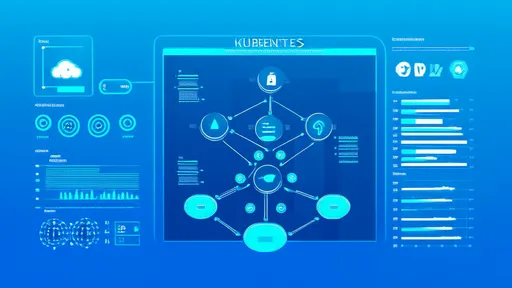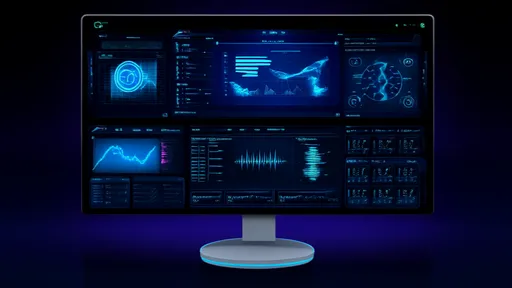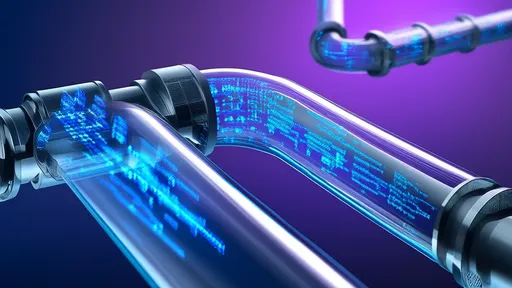In the ever-evolving landscape of container orchestration, Kubernetes has firmly established itself as the de facto standard for managing containerized applications at scale. One of its most powerful features is the ability to automatically scale applications in response to fluctuating demand, ensuring optimal performance while controlling costs. However, implementing an effective autoscaling strategy requires more than just enabling the feature; it demands a thoughtful approach grounded in proven best practices.
At the heart of Kubernetes autoscaling are two primary mechanisms: the Horizontal Pod Autoscaler (HPA) and the Vertical Pod Autoscaler (VPA). The HPA adjusts the number of pod replicas based on observed CPU utilization, memory consumption, or custom metrics, making it ideal for stateless applications that can handle traffic distribution across multiple instances. The VPA, on the other hand, modifies the resource requests and limits of individual pods, which is particularly useful for stateful applications or those with unpredictable resource needs. Understanding when and how to use each tool is critical; many organizations find that a combination of both yields the best results, though careful tuning is necessary to avoid conflicts.
Successful autoscaling begins long before any policies are applied. It starts with comprehensive application profiling during development and testing phases. Teams must thoroughly understand their application's resource consumption patterns under various loads—peak traffic, average use, and idle states. This involves not only identifying baseline CPU and memory requirements but also recognizing how the application behaves during scaling events. Without this foundational knowledge, any autoscaling configuration is essentially guesswork, likely leading to either over-provisioning—wasting valuable resources—or under-provisioning, which risks performance degradation and potential outages.
Defining appropriate metrics is arguably the most crucial step in configuring autoscaling. While CPU and memory are the default and most common metrics, they are not always the most indicative of an application's true state or performance needs. For many modern applications, especially those dealing with user requests or processing queues, custom metrics provide a much more accurate scaling signal. Metrics such as requests per second, average response latency, or even business-level indicators like the number of active users can be far more effective triggers. Implementing these requires integrating with the Kubernetes Metrics API and often involves tools like Prometheus for collection and exposure, but the effort pays dividends in responsiveness and efficiency.
The configuration of the autoscaler itself requires careful attention to detail. Setting the target utilization value is a balancing act. A value set too low, say 30%, will cause the system to scale up aggressively at the slightest load, potentially creating too many pods and driving up costs. A value set too high, like 90%, might delay scaling until the application is already struggling, impacting user experience. Most production environments find a sweet spot between 50% and 70% for CPU, though this varies widely by application. Similarly, the stabilization windows—which control how long the autoscaler waits before scaling up or down after a metric change—must be tuned to prevent rapid, flapping changes in replica count that can destabilize the system.
Equally important to scaling up is the ability to scale down efficiently. While no one wants an under-provisioned application, over-provisioning is a silent budget killer. Configuring scale-down behavior involves setting policies that safely remove capacity without disrupting ongoing operations. This includes defining a cooldown period after a scale-up event before scale-down can begin, ensuring that a brief traffic spike doesn't lead to a wasteful see-saw effect. It's also vital to consider pod disruption budgets, especially for stateful applications, to ensure Kubernetes does not terminate too many pods at once, potentially causing data loss or service interruption.
Beyond pod-level scaling, the Cluster Autoscaler (CA) plays a pivotal role in a complete autoscaling strategy. The CA works in tandem with HPA or VPA by adjusting the size of the node pool itself. When pods cannot be scheduled due to insufficient resources in the cluster, the CA provisions new nodes. Conversely, it removes nodes that are underutilized and can have their workloads consolidated onto other nodes. For this to work seamlessly, resource requests and limits must be accurately defined in pod specifications; the CA makes decisions based on these declared needs, not actual usage. Misconfigured requests can lead to inefficient bin packing and prevent the CA from effectively optimizing cluster resources.
In practice, robust autoscaling is not a "set it and forget it" feature. It requires continuous monitoring and adjustment. Teams should implement detailed observability using tools like Prometheus, Grafana, and the Kubernetes dashboard to track scaling events, resource usage, and application performance. Logging every scale-up and scale-down action, along with the metric values that triggered it, creates an audit trail that is invaluable for troubleshooting and optimization. Regularly reviewing these logs helps identify patterns, such as unnecessary scaling triggered by periodic batch jobs, allowing for further refinement of the autoscaling rules.
Finally, a successful autoscaling strategy is inextricably linked with the broader DevOps culture. It requires close collaboration between development and operations teams. Developers need to build applications with scalability in mind—designing stateless services, implementing health checks, and defining meaningful metrics. Operations teams need to provide a reliable, monitored platform and the expertise to configure the autoscalers effectively. Together, they must establish and test disaster recovery scenarios, ensuring that the autoscaling system can handle not just daily fluctuations but also unexpected traffic surges or partial infrastructure failures.
Mastering Kubernetes autoscaling is a journey that moves an organization from manual intervention to dynamic, intelligent resource management. By embracing these best practices—thorough profiling, metric selection, careful configuration, and continuous observation—teams can build resilient, cost-efficient systems that effortlessly bend with the winds of demand without breaking. The goal is to create an infrastructure that is not just automated, but truly autonomous, allowing engineers to focus on building features rather than managing capacity.
In today's rapidly evolving cybersecurity landscape, organizations face increasingly sophisticated threats that traditional perimeter-based defenses struggle to contain. The concept of microsegmentation has emerged as a critical component of zero trust architecture, fundamentally transforming how enterprises protect their digital assets. Unlike conventional security approaches that focus on building strong outer walls, microsegmentation operates on the principle that no entity—whether inside or outside the network—should be automatically trusted.
In the ever-evolving landscape of container orchestration, Kubernetes has firmly established itself as the de facto standard for managing containerized applications at scale. One of its most powerful features is the ability to automatically scale applications in response to fluctuating demand, ensuring optimal performance while controlling costs. However, implementing an effective autoscaling strategy requires more than just enabling the feature; it demands a thoughtful approach grounded in proven best practices.
In today's digital landscape, cloud computing has become the backbone of modern business operations, offering unparalleled scalability and flexibility. However, this convenience comes at a cost—literally. As organizations increasingly migrate to the cloud, managing and controlling cloud expenditures has emerged as a critical challenge. Many companies find themselves grappling with unexpected bills, wasted resources, and a lack of visibility into where their cloud dollars are going. This is where FinOps, a cultural practice and operational framework, steps in to bring financial accountability to the world of cloud spending.
The cybersecurity landscape continues to evolve at a breakneck pace, with containerization sitting squarely at the heart of modern application development. As organizations increasingly deploy applications using technologies like Docker and Kubernetes, the security of the underlying container images has become a paramount concern. This has spurred the development and maturation of a robust market for container image vulnerability scanning tools, each promising to fortify the software supply chain. A comprehensive evaluation of these tools reveals a complex ecosystem where capabilities, integration depth, and operational efficiency vary significantly.
As enterprises continue their digital transformation journeys, the debate between SD-WAN and SASE for hybrid cloud connectivity has become increasingly prominent. These two technologies represent different generations of networking solutions, each with distinct approaches to addressing the complex challenges of modern distributed architectures. While SD-WAN emerged as a revolutionary improvement over traditional MPLS networks, SASE represents a more comprehensive framework that integrates networking and security into a unified cloud-native service.
The evolution of cloud-native databases has entered a new phase with the rise of serverless architectures. What began as a shift from on-premise data centers to cloud-hosted instances has now matured into a more dynamic, cost-efficient, and scalable paradigm. The serverless model represents a fundamental rethinking of how databases are provisioned, managed, and utilized, moving away from static resource allocation toward an on-demand, pay-per-use approach. This transformation is not merely a technical upgrade but a strategic enabler for businesses aiming to thrive in an unpredictable, data-intensive landscape.
In the rapidly evolving landscape of cloud-native computing, the demand for robust observability has never been more critical. As organizations migrate to dynamic, distributed architectures, traditional monitoring tools often fall short in providing the depth and real-time insights required to maintain system reliability and performance. Enter eBPF—extended Berkeley Packet Filter—a revolutionary technology that is redefining how we achieve observability in cloud-native environments. Originally designed for network packet filtering, eBPF has evolved into a powerful kernel-level tool that enables developers and operators to gain unprecedented visibility into their systems without modifying application code or restarting processes.
The landscape of enterprise IT has undergone a seismic shift with the widespread adoption of multi-cloud and hybrid cloud strategies. While this approach offers unparalleled flexibility, cost optimization, and avoids vendor lock-in, it introduces a formidable layer of complexity. At the heart of this complexity lies the significant challenge of managing compatibility across disparate cloud environments. Cross-cloud management platforms have emerged as the central nervous system for this new reality, but their effectiveness is directly tied to their ability to navigate a labyrinth of compatibility issues.
The economic implications of serverless computing have become a central topic in cloud architecture discussions, shifting the conversation from pure technical implementation to strategic financial optimization. As organizations increasingly adopt Function-as-a-Service (FaaS) platforms, understanding the nuanced cost structures and optimization opportunities has become critical for maintaining competitive advantage while controlling cloud expenditures.
The landscape of software development has undergone a seismic shift with the proliferation of cloud-native architectures. As organizations race to deliver applications faster and more reliably through CI/CD pipelines, a critical challenge has emerged: security. The traditional approach of bolting on security measures at the end of the development cycle is no longer tenable. It creates bottlenecks, delays releases, and often results in vulnerabilities being discovered too late, when remediation is most costly and disruptive. In response, a transformative strategy known as "shifting left" has gained significant traction, fundamentally rethinking how and when security is integrated into the software development lifecycle.
The landscape of software testing is undergoing a profound transformation, driven by the relentless integration of artificial intelligence. One of the most impactful and rapidly evolving applications of AI in this domain is the automation of test case generation. This is not merely an incremental improvement to existing processes; it represents a fundamental shift in how development teams approach quality assurance, promising to accelerate release cycles while simultaneously enhancing the robustness and coverage of testing regimens.
In the ever-evolving landscape of artificial intelligence, voice generation technology has emerged as one of the most captivating and, at times, unsettling advancements. The ability to clone and generate highly realistic human voices is no longer confined to the realms of science fiction; it is a present-day reality with profound implications. This technology, often referred to as voice cloning or neural voice synthesis, leverages deep learning models to analyze, replicate, and generate speech that is indistinguishable from that of a real person. The process begins with the collection of a sample of the target voice, which can be as short as a few seconds or as long as several hours, depending on the desired fidelity and the complexity of the model being used.
The semiconductor industry stands at an inflection point where traditional chip design methodologies are increasingly strained by the complexity of modern architectures. As Moore's Law continues its relentless march, the once-manual processes of floorplanning and routing have become prohibitively time-consuming and error-prone. In this challenging landscape, reinforcement learning has emerged not merely as an experimental approach but as a transformative force in automating and optimizing chip layout.
In laboratories and research institutions across the globe, a quiet revolution is underway as artificial intelligence becomes an indispensable partner in scientific discovery. What was once the domain of human intuition, years of trial and error, and painstaking data analysis is now being accelerated at an unprecedented pace by machine learning algorithms and computational power. This transformation is not about replacing scientists but empowering them to ask bigger questions and uncover deeper truths about our universe.
In the ever-evolving landscape of artificial intelligence, a quiet revolution is taking place that promises to fundamentally reshape how machines understand the world. For decades, the field has been dominated by correlation-based approaches—powerful pattern recognition systems that excel at finding statistical relationships in data but fall painfully short when it comes to true understanding. The emerging discipline of causal machine learning seeks to change this paradigm, moving beyond mere correlations to uncover the actual mechanisms that drive phenomena in the real world.














